Chapter 3: Families, Clans, and Caste

Chapter 3: Families, Clans, and Caste

| Birth Rank | Family Structure | Additional Family Structures | Master Family Chart | Ancestry |
| Assigning Ancestral Holdings | Birthrights | Berei (goddess of family) | - | Oriental Adventures |
The family is a very important part of
most characters' lives. Family here does not mean just the father,
brothers, and sisters of the character,
but the entire set of relations--uncles, grandparents, cousins, great-uncles,
aunts, and in-laws. This interrelated
group of people is called the family || clan throughout these rules.
Knowing one's family and its collection
of alliances and feuds can be vital in oriental society.
Furthermore, the family also includes its
ancestors--especially those who achieved great fame in their own day.
These ancestors are treated with respect
and reverence and can add great honor to a family.
Often the
warrior rides into battle proclaiming
the deeds of his ancestors as proof of his own worth. The government
official holds his ancestors as brilliant
examples to be followed. A person who doesn't know his family and its
past is often not considered to be a whole
man.
Characters from certain classes are not
required to create families. These people have adopted their
profession as a new family. A shukenja,
for example, is expected to sever all connections with his past; they
would be obstacles to his pursuit of spiritual
purity. Players can create family backgrounds for these characters
if they want, but then the character must
abide by the rules governing families and clans given throughout this
rulebook.
This section of the book describes the
steps to creating a family, ancestry, and birthright for a PC.
Table 37: Birth Requirements by Class
lists the requirements and restrictions on the different
character classes.
Table 37: Birth
Requirements by Class
| Character Class | Birth Table
Required? |
Modifier | Family
Required? |
| Samurai | Yes | + 10 | Yes |
| Shukenja | No | 0 | No |
| Sohei | No | 0 | No |
| Kensai | Yes | 0 | Yes |
| Barbarian | Yes | 0 | Yes |
| Bushi | Yes | 0 | Yes |
| Wu Jen | No | 0 | No |
| Ninja | No | 0 | Yes |
| Yakuza | No | -10 | Yes |
Korobokuru
who become samurai do not roll on Table 38.
Instead, they automatically have the lowest
rank allowable for samurai characters. <what is the lowest rank?>
A ninja automatically
belongs to the Ninja clan. The character's birth rank can be determined
normally, if desired.
A character's birth rank is his basic social
class, and that of his family.
It affects the character in several ways:
To determine the character's birth
rank, roll 2d10, apply any modifiers, and find the result on the proper
column of Table 38: Character Birth.
| 2d10
Roll |
Birth Rank | NPC Reaction
Modifier |
Ancestry | Birthright | Honor |
| 2 | Outcast | 5% | d6/1 | d4/1 | 0 |
| 3 | Lower Class | 10% | d4/2 | d4/2 | 1 |
| 4-5 | Lower Middle Class | 15% | d6/2 | d6/1 | 5 |
| 6-8 | Middle Class | 20% | d10/1 | d8/2 | 8 |
| 9-10 | Upper Middle Class | 25% | d20/2 | d20/2 | 10 |
| 11-12 | Lower Upper Class | 30% | d100/2 | d20/4 | 15 |
| 13-14 | Upper Class | 35% | d100/4 | d100/3 | 17 |
| 15-16 | 10th Rank | 40% | d100/5 | d100/4 | 20 |
| 17-18 | 9th Rank | 45% | d100/6 | d100/5 | 22 |
| 19-20 | 8th Rank | 50% | d100/7 | d100/6 | 24 |
| 21-22 | 7th Rank | 55% | d100/7 | d100/7 | 25 |
| 23-24 | 6th Rank | 60% | d100/7 | d100/8 | 26 |
| 25-26 | 5th Rank | 65% | d100/8 | d100/9 | 27 |
| 27 | 4th Rank | 70% | d100/9 | d100/10 | 28 |
| 28 | 3rd Rank | 75% | d100/9 | d100/10 | 29 |
| 29 | 2nd Rank | 80% | d100/9 | d100/10 | 30 |
| 30 | 1st Rank | 90% | d100/10 | d100/10 | 35 |
When reading the result, the number before
the slash is the type of die rolled.
The number after the slash is the number
of die rolls made.
Birth Rank:
The birth ranks are described only in general terms of power, wealth and
importance. The
exact position held by the character's
family depends on the AREA where he was born and the society in which he
lives. A character born into the upper
middle class, for example, might be the son of a wealthy peasant, a poor
samurai, or
even a master beggar. A barbarian might
be the chief's son in a small village or encampment. The
DM must decide the family's exact status
(if necessary). Info on the lands and societies of the Orient can
be found under Kara-Tur
and Daily Life.
Q: What do the birth
ranks generated
on table 38 (page 31) really
mean?
A: As explained on
page 31, the exact circumstances
of a character?s birth are
up to
the DM. The higher the initial
die roll, the
better off the character?s
family is. A first
rank character, for example,
probably
comes from a well-to-do
family with clear
connections to the imperial
family, or
perhaps the character belongs
to the imperial
family (he might be a distant
cousin).
Upper-class families are
skilled artisans,
scribes, or wealthy merchants.
(151.8)
NPC Reaction Modifier:
This is the base score used to determine the reaction modifier when the
PC meets an NPC.
The modifier only applies only when the
character's status is known and should affect and NPC's reaction.
To determine the final modifier, find
the base scores for the PC and the NPC.
Subtract the smaller score from the larger.
If the NPC has a lower birth rank than
the character, use the difference as a positive modifier.
If the NPC has a higher birth rank, use
the difference as a negative modifier.
For example, Chang Lui,
the son of a wealthy farmer (lower upper class), is ordered to present
himself to a local noble of 7th Rank.
The referee secretly checks
to see the reaction of the noble to Chang Lui.
The noble knows Chang Lui's
background and this will affect his reaction.
The modifier is -25% (55%
- 30% = 25%), since the noble is of higher rank.
Ancestry:
This column lists the type of die used on Table 39: Ancestry.
The number after the slash lists how many
times the die is rolled.
Birthright:
The number before the slash indicates the type of die used on Table
40: Birthrights.
The number after the slash lists how many
die rolls are made on this table.
Honor:
This is the amount of honor the family (not the character) automatically
gains for the indicated birth rank.
After determining a character's birth
rank, the family structure must be outlined. The family structure is
the grouping of family units that form
the clan or family-the head of the clan, uncles, brothers, etc. The player
needs a copy of the Family Chart (on p.
144) This chart shows the current relationships of the various members
of the family. The chart is divided into
three layers, one for each generation.
* The first row is labeled "Head of Family"
and includes positions for the head of the family, the character's grandfather,
and his various great aunts and uncles.
** The second row, labeled "Father," provides
spaces for the character's father, uncles, and aunts.
*** The final row, "Children;' is the
PC's generation. On it go the PC and his brothers and sisters.
All families have a head of family-a venerable
(and usually old) man who is the founder of the clan. The
head of the family always occupies position
#1 on the Head of Family row of the chart. He, in turn, may be
related to other families not shown on
the chart (thus making everyone in both groups distant kin). These distant
relationships are determined by the DM.
All the branches of the family can trace their kinship back to the head
of the family.
For each row on the Family Chart, the player
rolls 1d8. The resulting number is the number of spaces
used on that row of the chart. Excess
spaces are crossed off and not used, starting with the highest numbered
space in each row. For example, if a 5
is rolled for the Head of Family row, spaces 8, 7, and 6 must be crossed
off in that row. The character has one
grandfather and four great uncles or aunts.
After finding the number of spaces used
in each row, the exact lineage of the character is rolled. Starting
with the Head of Family row, the player
rolls a die that most closely corresponds to the number of spaces
available on that line (without being
less-if five spaces are being used, the player rolls 1d6). The space
corresponding to the number rolled is
the character's grandfather. (If the die roll is greater than the number
of
spaces available, roll again.) All other
spaces on that row are brothers and sisters of the character's grandfather.
This procedure is repeated for each row
of the chart, determining the character's father and then the
character's own order of birth. The player
can draw lines connecting each of these (as in the example below),
forming a genealogical tree for the character.
Underneath each space are lines for sex,
name, and number of children. There is a 70% chance that any
space is a male descendant. The Head of
Family, Grandfather, and Father of the character are automatically
male. All members of the family carry
the family name, whether male or female. This is normally written and
spoken before the individual's name, since
the family is more important than the individual.
The number of children born of each space
equals 1d8-2. This result is noted in the space for children.
Negative results and zero mean that branch
of the family has issued no offspring. Family charts are not
necessary for every branch-only the branch
that leads directly to the player character. Filling out the chart gives
the player an idea of the size and structure
of his character's family clan.
The method just described for creating
a family tree presents a simplified picture of the complex
evolution of a family. DMs and players
who want more detail && background for a family can add any of
the
following complications. This does increase
the time required to generate a family, and players may want to
flesh out their family structures gradually.
Marriages:
Female members of a family clan will be married on a die roll of 1-5 on
1 d6 (spinsterhood
was uncommon and undesired). Note that
PC females are never required to be married. These
marriages are usually outside the family
clan, although marriages between distant relatives in the same family
are not unknown. A marriage extends the
family, giving the character NPC relatives in other family clans.
However, the bonds of relationship by
marriage are not nearly as strong as those of direct blood. While families
related by marriage generally react favorably
to each other, there is no guarantee of friendship between distant
cousins.
A character gains a + 10% bonus to reactions from NPCs belonging to family that is related to him by marriage.
If marriages are determined, the DM must
decide what other family is linked to the PC's family clan.
Marriages usually are between families
of approximately equal rank.
The player can note this on his Family
Chart and the referee notes the marriage on his Master Family Chart.
Adoptions:
Another possibility is adoption. There is a 1 in 20 chance (5%) that any
person on the Family Chart entered the family clan by adoption.
Adopted members may be orphans (1 or 2
on 1d6). Orphans are related only to the members of their adoptive family
clan.
However, some adoptions occur while the
family clan, sometimes even the parents, of the adopted
person are still alive. In these cases
the adopted person has two family clans: his hereditary family and his
adopted family.
Like marriages, adoptions expand the family's relationships and give a + 10% reaction bonus when dealing with members of the adopted family clan.
Unlike marriages, adoptions frequently
occur between families of different birth ranks.
Indeed, they are often politically motivated,
allowing members of a lower birth rank family to increase their
status through adoption.
Polygamy:
Polygamy is being married to more than one wife at the same time. In the
societies of the
Oriental AD&D
game this is legal and not unknown, although most marriages are monogamous
(only one
wife). Polygamy is common only among families
of great wealth and power, who must use marriage to secure
their alliances and cement their control
over other families. The DM should consider the situation carefully
before allowing this option. If so, he
must decide whether the grandfather || father had a polygamous marriage.
(Polygamy involving any other relative
has no effect.) Then the DM must determine how many children were
borne by each wife and what the player
character's position is.
Polygamy greatly confuses the issue of
relationships. As a rule, the first (or principal) wife is the most
favored. Her children are eligible for
direct inheritance, those of other wives are not. However, the father could
choose to favor the children of a later
wife (especially if they are more talented or their mother more loved),
skipping over those of the first wife.
Furthermore, the first wife might bear only daughters while the first son
of
the family comes from a later wife. Typically,
each wife would try to maneuver the others out of the picture to
secure the husband's favors for her children.
The relatives of various wives can also get into the picture. The
family of the first wife may be insulted
by slights to her and her children, while powerful relatives might try
to
impress the husband with the benefits
of a second (or later) wife.
The effects of inheritance and favor are
so varied in these situations that the DM must arbitrate the final
results. As a rule, the inheritance passes
to the first son of the first wife, while those of other wives receive
little
or nothing. If this is not the case, the
family of the first wife will react negatively to children of other wives.
It isn't unreasonable to assume that most
marriages are monogamous simply because the husband wishes
to avoid the problems polygamy creates
in the household.
Further Generations:
The Family Chart traces only three generations: that of the PC, his
father, and his grandfather. Players can
create further generations of ancestors using the same procedures. Aside
from adding {color} to the
campaign, these generations of ancestors have little effect on play.
The end result may
be that everyone in the campaign is related
somehow to everyone else. This provides historical interest but no
reaction roll modifiers, as the families
drift apart across the generations.
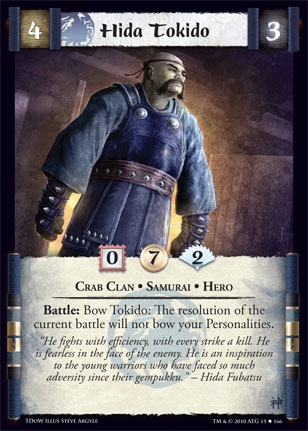
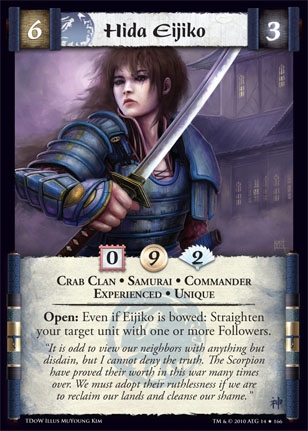
With the DM's agreement, PCs can choose
to be
members of the same family clan (although
not necessarily with the same father or grandfather). The PCs must be of
the same race.
Barbarian
PCs can only share a family with other barbarian PCs; the same applies
to samurai PCs.
The interrelated characters have the same
birth
rank and the same number of spaces available on the Head of Family
row of the Family Chart. Thereafter, they
roll normally on the Family Chart, but
the essential details of both charts must be identical: the various relations
must have the same number of children
on both charts, etc. Two PCs cannot occupy the same slot
on the chart (i.e., both cannot be the
first son of the same father) unless they are twins. Even then, one must
be
older. Only one set of Ancestry rolls
is made for the two characters and ancestral holdings must be assigned
identically on each chart. The names of
the various family members must be identical. Interrelated PCs can create
interesting and colorful campaigns.
Deaths:
Once per game year, the DM checks the fate of the NPC members of the family
clan. This is in
addition to any random events
during the course of the year. There is a chance each year that members
of the
family will die due to natural or accidental
causes.
Percentile dice are rolled for each NPC family member.
When an NPC character dies, cross that
space off the chart. His possessions pass to his firstborn son
75% of the time. If they do not, a power
struggle ensues. Roll percentile dice for each brother of the late NPC,
his remaining children (if any), and the
head of the family. The character with the highest number receives the
birthright. This represents unusual requests
of the will or in-fighting in the family for control of the possessions.
In almost all cases it leads to bad feelings,
feuding, and possibly even a split in the branches of the family clan.
The DM decides the repercussions of such
an event.
If the head of the family dies, the title
passes to the next brother (if any) or to the eldest son of the late
NPC (if there are no surviving brothers).
Again, such events can create bad feelings or even break up the family
clan, as decided by the DM.
Finally, if a PC dies, the player can re-enter
the game as a member of the same family, assuming the role of one of the
late PC's brothers or sisters.
The new character cannot hold any property
but otherwise receives normal birthright rolls.
The character automatically begins the
game at 1st level.
DMs who intend to include lots of family
intrigue in their campaigns should create a master
family chart for recording names, birth
ranks, honor, alliances, and relationships for all the PC and
NPC families in the game.
At the center of the chart should be a
space for the emperor || supreme ruler of the land.
Each family that figures in the campaign
receives a space somewhere on the chart.
Families of high birth
rank should be closer to the emperor's space, while those of low birth
rank are farther away.
* Clans which are related by marriage
can be connected by a ----dashed line----.
* Clans which are related by blood are
connected by a ____solid line____.
* A ....dotted line.... can note ancestral
allies.
<alt>
* A ->->line<-<- of arrows can note
ancestral enemies.

| Die Roll | Honor | Ancestry Result |
| 1-3 | 0 | - |
| 4 | -15 | Criminal |
| 5 | 0 | Land, small mountain |
| 6 | 0 | Roll again, using next higher die or +10 |
| 7-8 | +2 | Land, small farm |
| 9 | +2 | Traditional business |
| 10 | 0 | Roll again, using next higher die or +10 |
| 11 | -10 | Common bloodline |
| 12-15 | +3 | Land, modest farm |
| 16-19 | +6 | Land, small town |
| 20 | 0 | Roll again, using next higher die or +10 |
| 21-24 | 0 | - |
| 25-26 | +6 | Advantageous marriage |
| 27-31 | +3 | Ancestral alliance |
| 32-35 | +2 | Ancestral feud |
| 36-38 | 0 | - |
| 39 | +6 | Brilliant artisan |
| 40-42 | +8 | Castle, small |
| 43-44 | +10 | Castle, large |
| 45 | +7 | Classic artist |
| 46 | -10 | Curse |
| 47-49 | 0 | - |
| 50 | -10 | Defeated family |
| 51-54 | +6 | Estate, small |
| 55-56 | +7 | Estate, large |
| 57 | +9 | Famous general |
| 58 | +1 | Famous holy man |
| 59 | +8 | Famous minister |
| 60-63 | 0 | - |
| 64-69 | 0 | - |
| 70 | +10 | Folk hero |
| 71 | -20 | Great betrayal |
| 72 | +15 | Great hero |
| 73-77 | 0 | - |
| 78 | +12 | Imperial bloodline |
| 79 | -5 | Infamous general |
| 80 | -7 | Infamous minister |
| 81-85 | 0 | - |
| 86-87 | +4 | Land, large town |
| 88-91 | +2 | Merchant fleet |
| 92-93 | -5 | Notorious moneylender |
| 94-96 | +7 | Hereditary title |
| 97 | 0 | Roll again, +10 on die roll |
| 98 | 0 | Secret society |
| 99 | +3 | Tragic event |
| 00 | 0 | - |
Once a character's birth rank and family
structure are known, the ancestry of his family must be
determined. Ancestry is more than a list
of ancestors. It includes properties and goods that have been handed
down from generation to generation, outstanding
debts || obligations of the family, traditional alliances and
feuds, and notable deeds, both respected
and infamous, of past generations. The ancestry generated here,
however, is only the bare bones. The player
and the DM must work together supplying names and specific
details for the story. But this is part
of roleplaying, allowing the player and DM to create a unique world for
their campaign.
HONOR: Adding this honor to that found under Character Birth gives the family's base honor for use in the game.
ANCESTRY RESULT: This is a general description of a piece of property, an ancestor, or an event in the family's lineage.
Advantageous
marriage: In the recent past the family managed
to arrange a marriage between one of
its daughters and a man 1-3 social levels
higher. The family is now related by marriage to a higher social class.
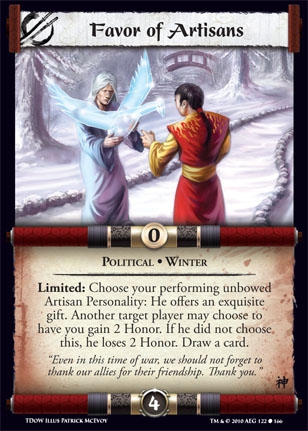
The family has a
long-term friendship with another family of roughly the same level.
The DM determines
the family.
A + 20% modifier
is applied to NPC encounter reactions between
the families.
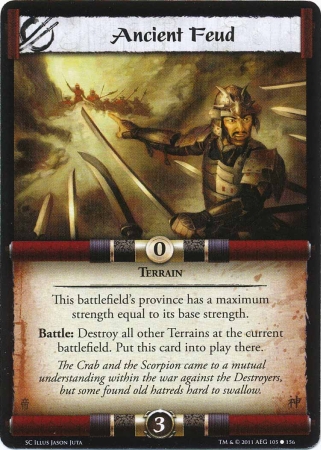
The family has a
long-standing blood feud with another family
of approximately the
same level. The DM determines the family.
A -40% modifier is applied to NPC encounter
reactions between the
families. Poor reactions lead to insults,
duels, or attacks.
<alt>
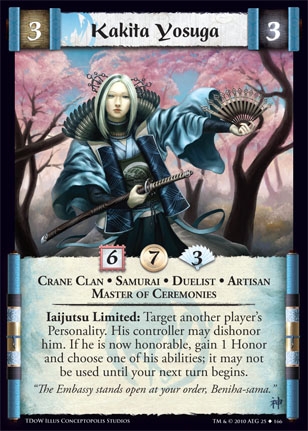
The family produced a craftsman noted for <her> exceptionally fine work.

One of the family groups holds the deed
to a castle or similar property (a
barbarian
clan might
control some natural stronghold or semi-permanent
camp). This includes the fighting men needed to garrison the
castle and guard the commoners who live
nearby and serve the lord of the castle.
Classical
artist:
One of the family's
distant ancestors was an artist whose work is now considered to be classic
in its field.
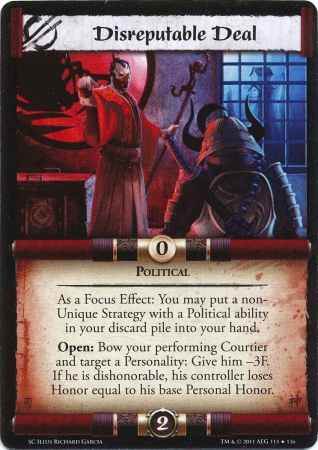
One of the family's recent ancestors was
a notorious condemned criminal (horse thief,
murderer, etc.).
This is an awful blot on the family honor.
Curse: An ancestral
curse haunts the family, perhaps as a result of some great evil done
by the family in
the past. It may be a haunting by a vengeful
spirit, a tendency for the men to be killed young, etc. The curse is
well-known to all. It has no effect on
the everyday life of family members and does not directly affect the PC.
However, the need to perform some deed
to lift the curse can be the basis for an exciting adventure.
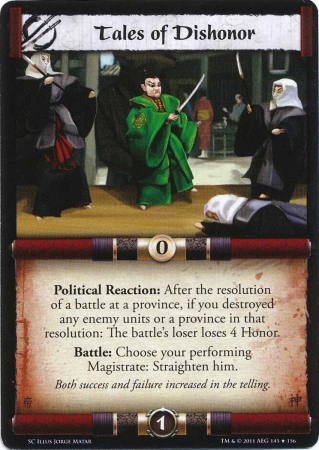
The family was once
large and powerful, but was defeated in a great struggle for power.
This defeat results in lasting dishonor
to the clan.
The family automatically has an ancestral
feud with the victorious family (determined by the DM).
In addition, the family has ancestral
alliances with any other defeated families.
<>
Estate: The
family holds the deed to an estate.
This includes control of the peasants
who work the land,
warriors to defend it, and an appropriately
styled dwelling for the owner. For barbarian
characters, an estate can
also be the control of a
large herd of animals. Estates generate a yearly income for the
owner of the land
between 100 and 1,000 ch'ien.
Famous general, holy man, or minister:
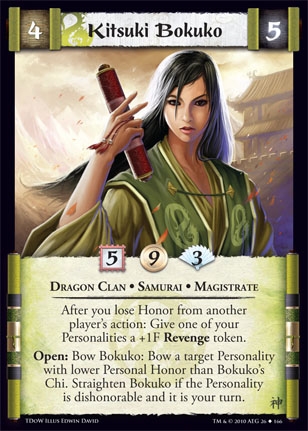
An ancestor of the family
is remembered for his heroic deeds
in war, his religious purity, or his wisdom
as a councilor, minister of state, advisor, or chieftain. The ancestor
is
venerated and respected by the family
and is known to others.
Folk Hero:
A distant ancestor was a hero and defender of the common people. The commoners
remember this and the family gains a +
10 modifier on encounter reactions with
NPC commoners.
Great betrayal:
A distant ancestor attempted (and failed) in an act of great treachery
to his lord.
His name is only spoken in evil tones.
Great hero:
A distant ancestor was a hero renowned in
folklore && lejend. All of his deeds were
magnificent (especially as the stories
were told again && again) and he has come to represent the heroic
ideal.
His name, family,
and deeds are known to all.
Imperial
bloodline: The family can trace some blood connection
to the imperial house (or the highest
ruler of the land).
Although extremely tenuous, the family can claim some right to the throne.
This doesn't mean
anyone in the family
will ever reach this position, since there are many more claimants with
better bloodlines
(such as the emperor's
children).
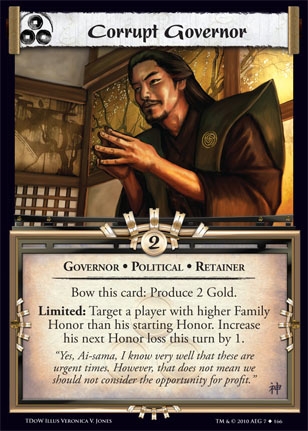
The
family managed
to produce a leader noted for his venality,
bungling, stupidity, or corruption. Since
he reached high position, his evils or failures are well known to all.
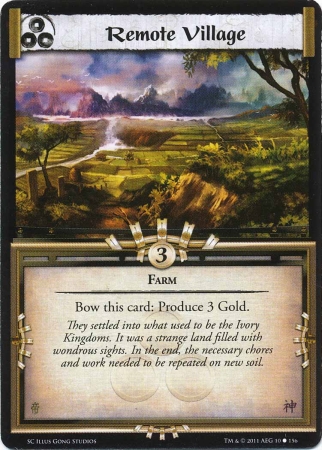
The family holds the title to land. Mountain
land is poor and unsuitable for cultivation, although
bamboo and lumber may be taken from it.
Such land can support only 2-8 people (one small family). Farm land
is used for crops (mainly rice). Small
farms can support 3-12 people and moderate farms 4-16. Town land can
mean the family controls an entire village,
a mansion in town, or several blocks of a city. Depending on its size,
property produces income for the branch
of the family that controls it. If only one piece of land is held, it is
worked and lived on by some branch of
the family. If more than one property is held, the family does not live
on the land, but receives rent from commoners
who do. Yearly income from property ranges from 10 to 2,000
ch'ien.
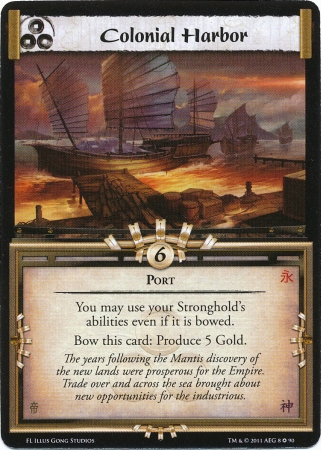
Some branch of the family has a successful
trading business.
It owns 2-5 ships (caravans in land-locked
areas) and appropriate warehouses.
It also hires men to serve as sailors
(or teamsters), guards, clerks, etc.
A merchant fleet produces a yearly income
between 100 and 1,000 ch'ien.
Notorious
moneylender: A recent ancestor made a good living loaning money (usually
at exorbitant
interest) to local people. This gave the
family
a bad reputation, but greater wealth. The character is
automatically entitled to an extra roll
on Table 40: Birthrights.
Hereditary
title: The head of the
family holds a hereditary
title of respect or nobility.
When he dies, it will pass to his son.
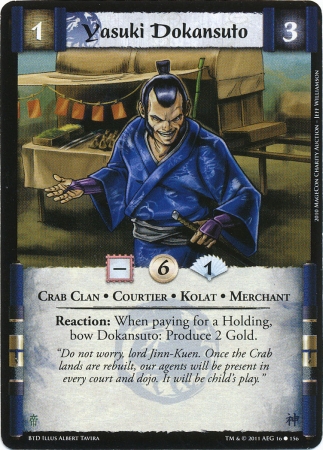
The family has long-standing
connections with a secret society. <(cf. Tong Shu
(Secret Society members))
The DM determines the exact purpose of
the society.
This is not known to anyone outside the
family and the society members.
It does provide the PC with contacts inside
this society.
Tragic
event:
Some sad event has occurred to a distant ancestor be it in love, war, or
business.
However, the nobility
of the ancestor's suffering has actually increased the honor of the family.
Such events
usually find their
way into folktales, dramas, or songs.
Ancestral holdings are the property results
gained on the Table 39: Ancestry. These are automatically
owned by some NPC of the family. They
are never owned by a PC (or his siblings) at the start of
the character's career. The first ancestral
holding is automatically held by the head of the family. Assign any
remaining holdings by random dice roll
to NPCs on the Head of Family and Father rows of the Family Chart,
using the method described for determining
the character's position in the family. If the die roll is greater than
the number of spaces, that property is
owned by the head of the family.
Note that simply because a property belongs
to the PC's family clan, this does not
automatically grant the PC use of the
property. He must request permission of the NPC owner and
a reaction roll must still be made. Furthermore,
the DM can refuse such requests if they are not in keeping with
his campaign.
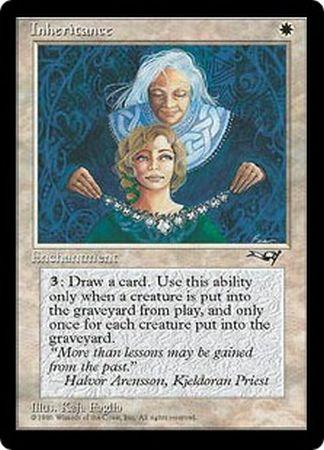
A birthright is something a PC begins the
game with, by virtue of his family clan. It may be
a treasured heirloom or a share of the
family holdings. Or it may be nothing, owing to poverty, birth order, or
chance. Birthrights are determined for
the character at the beginning of the game. Once determined, they are the
property of both the player character
and the family clan. If the player character dies, the birthright returns
to
the possession of the family clan. If
the character loses a birthright, he and his family lose honor.
To determine what birthrights a character
has, the player must roll on Table 40: Birthrights. The type of
die used and the number of die rolls made
was determined by Table 38: Character Birth. The number
of die
rolls allowed is modified by subtracting
the character's birth rank. The first son, for example, subtracts one from
the number of rolls allowed.
| Die Roll | Honor | Birthright |
| 1-3 | 0 | — |
| 4 | 0 | Roll again using next higher die or + 10 |
| 5 | 0 | — |
| 6 | + 1 | Property Share |
| 7 | 0 | Roll again, using next higher die or +10 |
| 8 | + 1 | Property Share |
| 9-16 | 0 | — |
| 17-18 | + 1 | Property Share |
| 19 | 0 | Horse |
| 20 | 0 | — |
| 21-30 | 0 | — |
| 31-33 | + 2 | Armor of quality |
| 34-40 | 0 | — |
| 41-45 | + 1 | Property Share |
| 46-50 | 0 | — |
| 51-55 | 0 | 1-8 cash strings |
| 56-60 | + 1 | Property Share |
| 61-63 | + 2 | Weapon of quality |
| 64-70 | 0 | — |
| 71-75 | + 2 | Armor of quality |
| 76-80 | + 1 | 1-4 horses |
| 81-90 | 0 | — |
| 91-95 | 0 | 2-12 cash strings |
| 96-98 | + 2 | Weapon of quality |
| 99 | + 4 | Magical weapon |
| 100 | 0 | Roll again with +10 on die roll |
Honor indicates
the amount of personal (not family) honor the character gains for receiving
the birthright.
This does not increase the family's base
honor, but is added to the character's honor at the start of the game.
The effect of each birthright is as follows.
Q: I don?t understand
the birthright
rules on page 34. How do
you use
birth rank in order to modify
the
chances for a birthright?
If you subtract
birth rank from the number
of
rolls on table 40, then
characters
with low ranks never receive
birthrights,
right?. Also, not all the
results
on the birth rank table
(table
38, page 31) have numerical
values.
A: The term ?birth
rank? is used incorrectly
on page 34. The term that
should be used
here is ?birth order? (see
Unearthed Arcana,
page 83). An only child
has a birth
order of zero. A character
born late in the
birth order might not receive
any birthright
even in a wealthy family.
(151.8)
Q: If a character
loses a family heirloom
or weapon, is he obligated
obligation to regain it
or die in the
attempt? Must he commit
suicide if
regaining the item is impossible?
A: The character
simply loses 5 points of
honor (or 10 points if he
is a samurai). The
character is under no particular
obligation
to regain the item. The
DM might choose
to assess a further honor
loss (2 points for
refusing a challenge) if
the character does
not attempt to regain the
item, or the DM
might make an honor award
(5 points for
accomplishing a great deed)
if the character
successfully regains the
item. No character
is ever obligated to commit
suicide
due to loss of honor, though
any character
with a negative honor score
is immediately
removed from play (see Oriental
Adventures,
page 35).
(151.58)
Property
share: The character receives 10%-30% of the yearly income generated
by a property, if any
are possessed by the family
clan. The character can receive property shares only from those lands held
by his
father, grandfather, or the head of the
family. A character can never have more than a 30% share in a single
property. If the family holds no productive
property, this roll is treated as no result.
Horse:
The character receives one or more horses. They can be any type the character
desires. This does
not include a saddle or any other tack
required.
Cash strings:
The character receives the listed number of cash strings.
Each string holds 100 coins. The DM determines
the type of coin in each string.
Armor of Quality && Weapon of Quality:
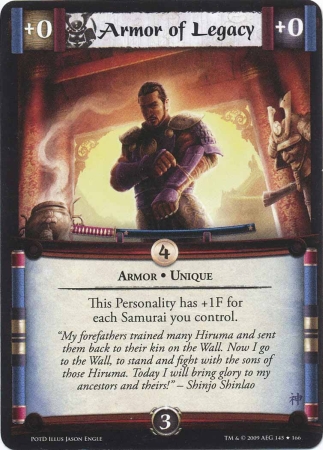
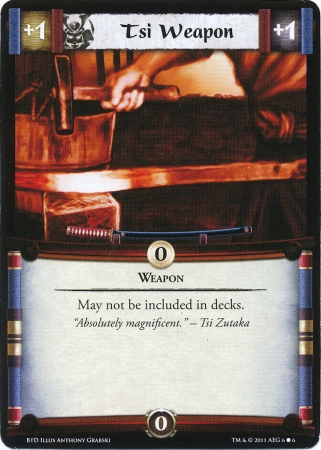
The character has been given one of the
family's minor
heirlooms-a suit of armor || a weapon
of quality (see Treasure).
If it is armor of quality, the DM randomly
determines the type of armor. <table>
If it is a weapon of quality, the player
chooses the type of weapon.
Such items cannot be given away or sold,
since they belong in part to the family.
The character is expected to pass these
items on through his family in later years.
Magical
weapon: The character receives
one of the family's great treasures-a magical weapon
(complete with history). The weapon is
either a sword or a miscellaneous weapon. It is never more magical than
+ 2 and has no special abilities. Like
a weapon of quality, the character can never give away or sell this item.
Furthermore, should the character lose
the item and still live (instead of dying in the attempt to regain it),
he
suffers a great loss of honor.
Roll again:
The player should roll again, using the next larger type of die (1d4 becomes
1d6, 1d6
becomes 1d8, etc.). If the character is
already rolling d100, add 10 to the result instead.
<alt image: Famille
devant la maison © Guillermo Gonzales et Éditions
Daniel Maghen>